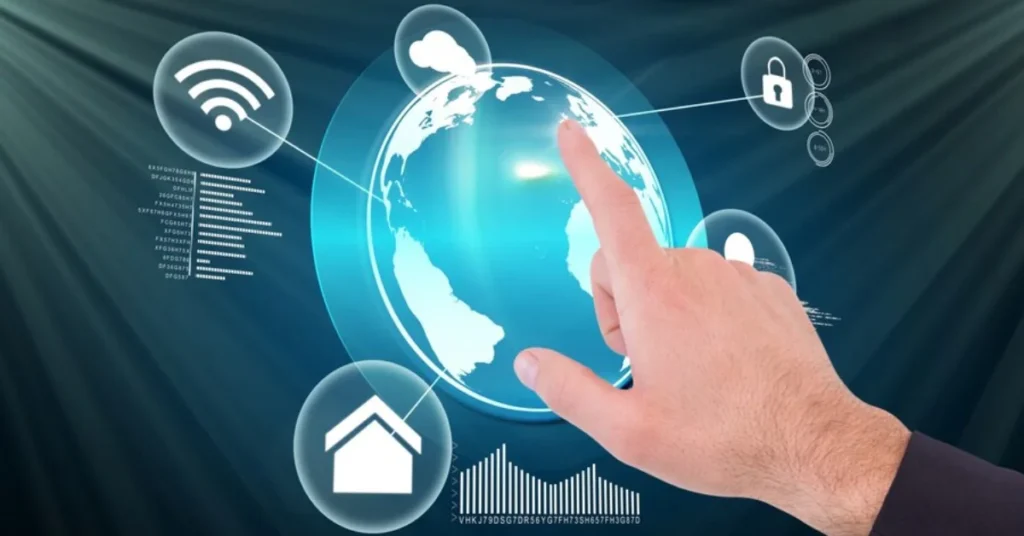The Internet of Things (IoT) is changing how businesses grow by offering opportunities to improve efficiency and enhance customer experiences through innovation. The worldwide IoT market is estimated to hit $1 trillion by 2026 and can increase to $4 trillion by 2032.
This expansion is fueled by companies leveraging devices to simplify operations and improve decision-making. Yet, despite the benefits of Enterprise IoT adoption, many businesses face challenges. Significant initial expenses coupled with worries about data protection and intricate regulatory standards necessitate preparation and specialized knowledge.
This blog aims to delve into businesses’ challenges in adopting IoT and present effective strategies to overcome them successfully.
Key Challenges in Adopting IoT for Enterprises
Below are the main challenges of adopting IoT in enterprises and how they impact business growth.
1. High Initial Costs and Uncertain ROI
Setting up systems involves investing in both hardware and software to create the necessary connectivity infrastructure. This presents difficulties in analyzing benefits for companies of different scales because of the high initial costs that might hinder adoption by small and medium-sized businesses.
To maximize ROI, companies should prioritize incorporating IoT solutions that can adjust to changing business needs and secure the lasting value of their investment.
2. Data Security and Privacy Vulnerabilities
IoT devices continuously send data that raises the risk of cyber threats significantly. The interconnectedness of IoT implies that one insecure device could jeopardize a network’s security and lead to sensitive information breaches. It is crucial to have stringent measures for data privacy and security, such as encryption authentication protocols and timely software updates, throughout the system.
Comply with the changing data regulations like GDPR in the EU by allocating resources to prevent legal and financial consequences.
3. Complex Integration and Interoperability Issues
Combining IoT with systems poses a significant hurdle, frequently leading to platform compatibility issues. This mainly occurs due to the absence of standard protocols across devices.
Many companies rely on IoT consulting services to bridge this gap and guarantee seamless integration of new IoT solutions with current technology systems. Moreover, organizations require an infrastructure adept at accommodating a variety of devices without causing disruptions to operations.
4. Regulatory Compliance and Data Handling Requirements
The rules and regulations surrounding IoT are changing as new standards come into play to safeguard data and promote practices in the field. Businesses are facing difficulty in complying with rules while conducting operations worldwide.
Staying compliant may involve expenses for obtaining certifications and conducting audits to meet data storage regulations in place for the Internet of Things (IoT). Businesses must keep abreast of emerging laws and allocate resources to ensure compliance is met effectively to minimize risks and avoid financial penalties.
5. Technical Expertise and Knowledge Gaps
To effectively implement projects, expertise in technology, cybersecurity, and data analytics skills are required. Many businesses may lack the necessary knowledge internally to manage IoT systems efficiently. This knowledge gap could potentially impede project rollout and system effectiveness and even lead to project failures.
To ensure long-term adoption, it’s crucial to improve teams’ skills or hire IoT developers. Businesses can achieve this by partnering with seasoned IoT experts or solution providers for seamless integration.
6. Data Management and Analytics Challenges
The use of Enterprise IoT produces volumes of unorganized data that are challenging to manage effectively for analysis purposes. Inadequate data handling could lead to delays and errors in making decisions. It is crucial to incorporate intelligence (analytics) and cloud-based technologies to manage substantial data sets efficiently.
Enterprises can leverage these techniques to derive insights from data and convert it into valuable information for strategic decision-making purposes.
7. Connectivity and Power Dependencies
IoT devices depend greatly on a power supply and reliable network connections for smooth operations and data transfer. Businesses should allocate sufficient resources to implement solutions and decentralized network structures like edge computing to mitigate any disruptions caused by network outages or power cuts.
Processing data at the source through edge computing also helps minimize delays and enables responses for applications that require real-time performance.
8. Scalability Concerns
As companies expand their operations, the demand for IoT devices and infrastructure increases. Expanding networks to support a growing number of devices, higher volumes of data, and sophisticated operations poses challenges. Without planning, businesses face the threat of network congestion and performance limitations.
Solutions to Overcome IoT Adoption Challenges
Dealing with the challenges of Enterprise IoT demands a strategy and the right resources.
Here are some practical solutions:
1. Invest in a Long-Term IoT Strategy
Achieving long-term success in IoT begins by pinpointing key areas where IoT implementation can improve efficiency and drive expansion. Second, Opt for solutions that are scalable to meet evolving requirements. Finally, emphasize setting objectives that can validate expenses and showcase long-term returns on investment.
2. Partner with an Experienced IoT Development Company
Working with an IoT development company allows you to tap into their expertise. These companies offer solutions that encompass various aspects such as system integration and data management. An established partner can simplify the deployment process for you by addressing interoperability issues and ensuring the security and compliance of your solution. With guidance from these experts, businesses can steer clear of errors and seamlessly execute their IoT projects.
3. Hire IoT Developers with Specialized Skills
Creating IoT ecosystems involves a blend of skills ranging from software engineering to cybersecurity. To fill this knowledge gap, many businesses hire IoT developers with the required skills. Skilled developers can manage the technical components of IoT, like secure data management, integrating devices, and troubleshooting. Establishing a team with deep knowledge of IoT guarantees improved operation efficiency and system functionality.
4. Implement Robust Security and Compliance Protocols
Protecting networks is crucial for safeguarding information and preventing access incidents in a business setting. Organizations need to establish a variety of security measures, like encrypting data and implementing authentication procedures while keeping systems up to date. Adhering to regulations like the GDPR helps companies steer clear of issues related to data privacy. Conducting regular checks and evaluating risks can enhance security measures.
5. Enhance Data Management and Analytics Capabilities
Effective data management is crucial for uncovering information from IoT’s devices. AI-driven analytics and cloud storage platforms can assist in managing data sets. These technologies empower businesses to interpret real-time data swiftly and make informed decisions to enhance efficiency and productivity. By embracing data handling practices, firms can transform data into useful insights that facilitate progress and development.
6. Develop a Reliable Connectivity and Power Backup Plan
The effectiveness of IoT’s devices heavily relies upon their power sources and network connectivity reliability. Businesses must have backup systems to avert interruptions. Utilizing edge computing enables data processing at a level that diminishes server dependency and guarantees faster responses. Power backups and decentralized network configurations further bolster the dependability of systems.
Conclusion
Integrating IoT effectively has the power to revolutionize how businesses operate and boost productivity while creating opportunities for growth expansion. Yet overcoming challenges with accuracy is key along the way.
Teaming up with a skilled IoT product development services provider can simplify the integration procedure and guarantee smooth performance and maximum efficiency.
With the right approach, businesses can crack true IoT’s potential for success.
FAQs
1. What challenges do businesses face when implementing IoT Solutions?
Businesses face challenges like high initial costs, concerns about data protection, complexities in integrating systems, adhering to regulations, and difficulty finding IoT experts.
2. How can an IoT development company help in overcoming IoT’s challenges?
A company specializing in IoT’s development offers services in integrating systems and handling data securely with a focus on scalability to make it easier for clients to implement and achieve optimal performance efficiency.
3. What skills are required to manage an IoT’s ecosystem effectively?
To effectively handle IoT’s systems, expertise in software engineering, cybersecurity practices, data analysis, and hardware integration is required to guarantee secure operations.
4. How do IoT’s product development services support scalability?
These services provide scalable architecture and infrastructure solutions, allowing enterprises to expand their IoT systems as business needs grow without performance issues.







